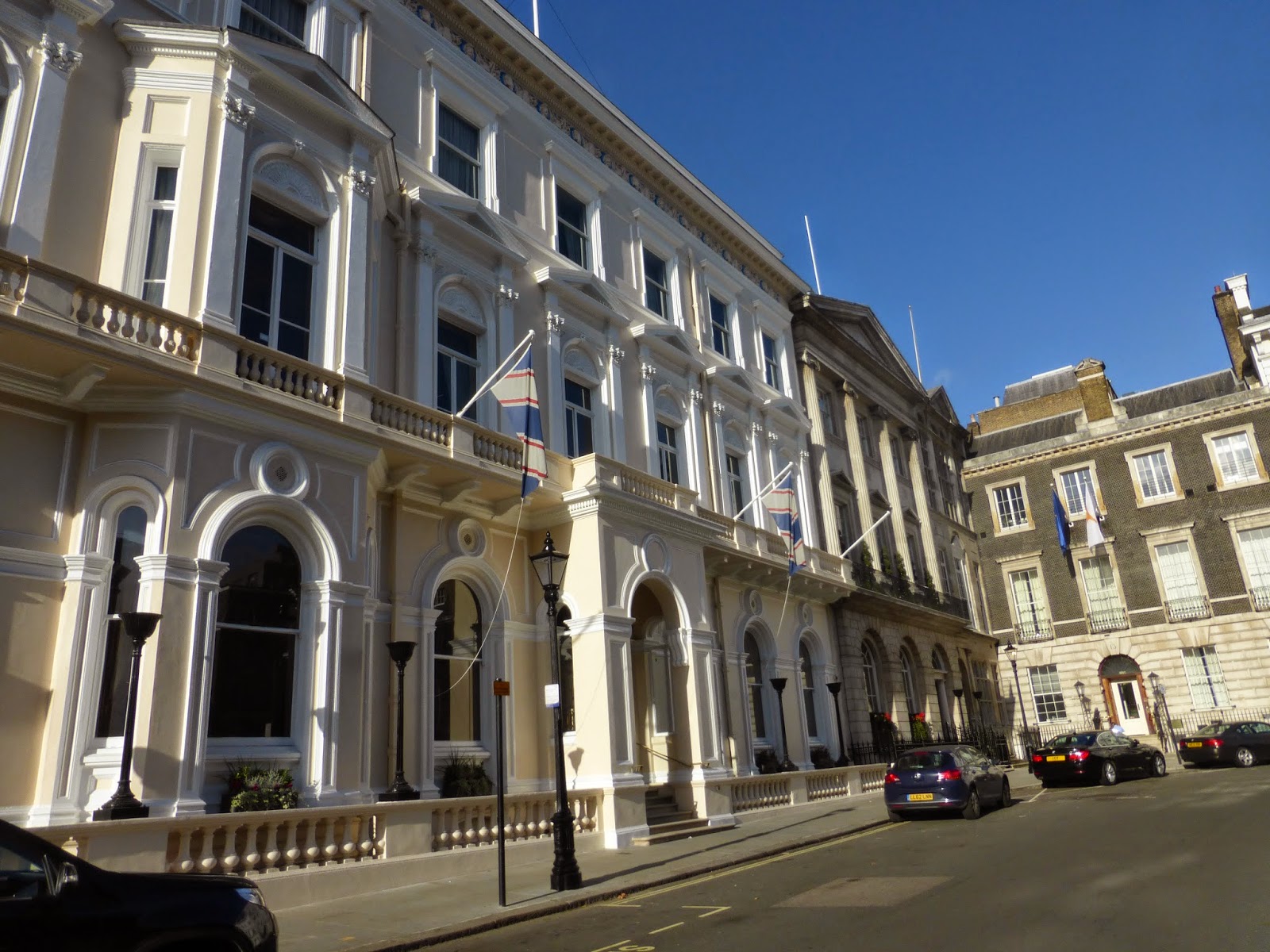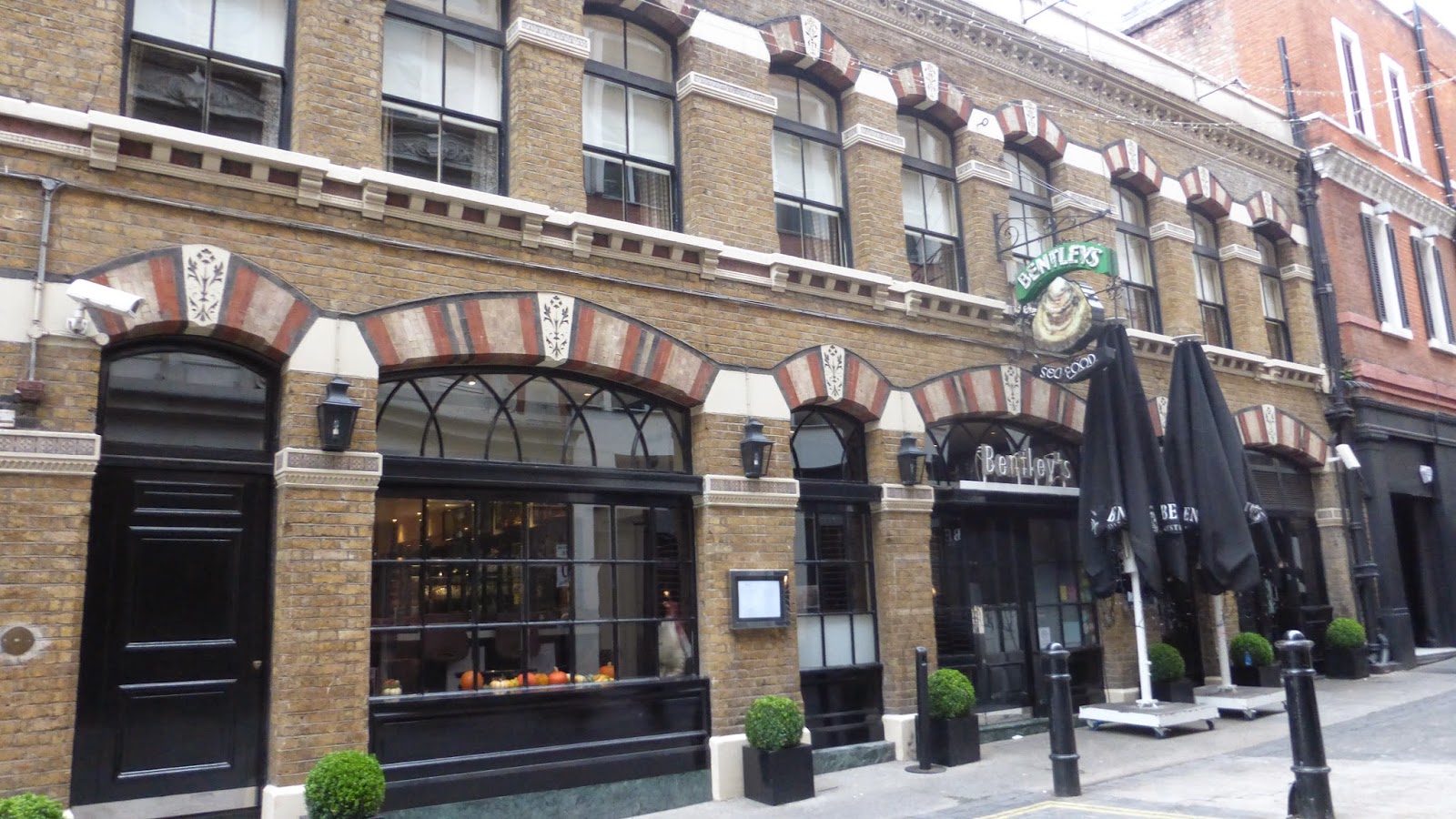This post is part of my series 'Above the Underground'. I am hoping to visit, photograph and research every station on the London Underground.
This station is No. 6 on the Bakerloo line going North. Both the Bakerloo and the Piccadilly line stop here. The underground station is directly below Piccadilly Circus with no building above ground and has 4 exits/entrances. The name Piccadilly comes from a 17th Cent frilled collar called a piccadil which were made in this area and the word 'circus' comes from the Latin word meaning 'circle'
The underground station is directly below Piccadilly Circus with no building above ground and has 4 exits/entrances. The name Piccadilly comes from a 17th Cent frilled collar called a piccadil which were made in this area and the word 'circus' comes from the Latin word meaning 'circle'In the centre of Piccadilly Circus is possibly the most famous meeting place in London. This is the Shaftesbury Memorial fountain, commonly known as the statue of Eros. However the statue was originally called the Angel of Christian Charity but was renamed Eros after the Greek god of love.
The Circus is at the centre of five main roads: Regent Street, Shaftesbury Avenue, Piccadilly, Coventry Street and Haymarket.
London's first illuminated billboard was installed here in 1895.
The Trocodero is a large building on Coventry Street. Built in 1896 as a restaurant, it closed in 1965. It was almost 20 years later before it reopened as an entertainment area with a variety of rides and exhibitions. It is currently changing its usage yet again as it is being redeveloped as a hotel.
The Criterion Building, which occupies the whole of the South side of Piccadilly Circus is home to the Criterion restaurant, theatre and Lillywhites. at the corner of the building is the sculpture of the Horses of Helios that you see so many people photograph

yet so few look up to see the three Daughters of Helios (the Three Graces) leaping from the top of the building. Both sculptures are by Rudy Weller.

At the other end of the Criterion building is this large sports shop, once a great sporting institution. Although this store only opened in 1925, Lillywhites was a family run business since 1877. William Lillywhite introduced overarm bowling to cricket and his son, James, was the first ever captain of an England team against Australia in 1877. The bronze plaque above shows James playing in a bowler hat. Entering the store now you can still see the original old oak panelled staircase. It used to be the most famous of all sports shops with no sport unrepresented but now it is the same as any other chain store selling sports wear.
Piccadilly
A gas lamp still in use on Eagle Place just off Piccadilly.
Cordings men's outfitters specialising in outdoor and waterproof garments. In 1877 the business transferred from The Strand to Piccadilly. The company developed rubberised raincoats which were considered essential wear for those who went hunting or drove open top cars. In 2003 the company decided to ask one of its best customers if they wished to back a management buyout, which he did. That customer was Eric Clapton.

This apartment block which is set back off Piccadilly was built in the 1770s and has housed many famous residents including Prince Frederick, Duke of York; Lord Byron, William Gladstone, Aldous Huxley. Not just anyone can live here, you need to be someone with social connections in order to rent an apartment .
Entrance to Burlington House.
 Burlington house, built in 1664, is the only surviving town mansion on Piccadilly built after the restoration. In 1867 it became the home of the Royal Academy, alongside the Geological, Chemical, Astronomical and Linnean societies. The courtyard is a public space used as an entrance to the various societies and also houses permanent and temporary sculptures and displays.
Burlington house, built in 1664, is the only surviving town mansion on Piccadilly built after the restoration. In 1867 it became the home of the Royal Academy, alongside the Geological, Chemical, Astronomical and Linnean societies. The courtyard is a public space used as an entrance to the various societies and also houses permanent and temporary sculptures and displays.
The Linnean Society is the world's oldest active biological society. It was here in 1858 that Darwin first read his paper on evolution.
In the entrance to Burlington House is the first ever red phone box which is made of wood.
Burlington Arcade, Britain's first ever shopping arcade opened in 1819 and was said to have been built to stop passers by throwing oyster shells into Burlington House. Nowadays it has its own private police force of Beadles who enforce such laws as no running, whistling or opening umbrellas.
On the opposite side of the road is the department store of Fortnum and Mason. It was founded in 1707 and is a unique upmarket store. On the front of the building is the clock which chimes every 15mins, but you need to be there on the hour to see Mr Fortnum and Mr Mason appear.

The church prides itself on being an open, welcoming Christian community and does much to help the disadvantaged within the area.
At the front of the church are these magnificent wrought iron gates and railings which were erected to commemorate the coronation of Queen Elizabeth II in 1953.

Hatchard's Bookstore is the oldest bookstore in the UK. Founded in 1797 by John Hatchard in Piccadilly from where it still trades.
This was home to the Royal Institute of painters in water colours until it moved to the Mall Galleries near Trafalgar Square in 1970
In 1661 Henry Germyn developed a residential area beginning with St James's Square and its 14 grand houses


Development continued after his death and centred around the Square and St James's Church. After 300 years the area still maintains some exclusive shops concentrating on men's fashion.
 |
 |
This small 70 seat theatre was once the changing rooms for the staff of the restaurant upstairs. It became a theatre in 1994.
Regent Street
One of the major shopping streets in the West end of London. It is named after the Prince Regent who later became George IV. Originally designed by John Nash the layout remains but the buildings have since been replaced. Every building in Regent Street is protected as a listed building with at least Grade II status.



Established in 1916 Bentley's oyster bar and grill is on Swallow Street between Piccadilly and Regent Street.
Shaftesbury Avenue with some of its many theatres.

You don't have to wander far in this area to find a theatre with Her Majesty's theatre and the Theatre Royal on Haymarket .

But behind the theatres, shops and crowds you are never too far away from a green area. This is Golden Square a short walk from Regent Street.

Amazing that all of this and more is within a 5 minute walk of Piccadilly Circus tube station. Another bit of trivia about the Underground is that an estimated half a million mice live within the system.
Sharing with Our World Tuesday





























Great photos and so many interesting and well-known places. Even I recognize some of the places around Piccadilly from a visit to London many years ago!
ReplyDeleteAmazing captures of such fascinating places indeed!! Thanks for sharing!! Hope you have a great new week!!
ReplyDeleteWow, there is so much to see at this station and around Piccadilly. I love the horse statues and the three daughters of Helios. And the red phone booth is another favorite.. Wonderful post, thanks for sharing.. Have a happy week!
ReplyDeleteSo many fascinating facts and photos! I had never heard of an outdoor pulpit before.
ReplyDeleteWhat an extraordinary area, with so many firsts and so many oldest. I like the Daughters of Helios sculpture very much.
ReplyDeleteFantastic photo journalism of your 6th stop ~ loving the journey!
ReplyDeleteHappy Week to you,
artmusedog and carol
Such a wonderfully comprehensive post. A veritable tour of inner London. I look forward to many more.
ReplyDeleteSuch a wonderful virtual tour for me. The pics are very good.
ReplyDeleteyou can keep ypur mice - to answer your ? on Hyde DP here we only had a few days of bad snow but it is still lingering in pockets and on the higher ground.
ReplyDeleteA lovely series of shots. Glad to see the church helping out the homeless.
ReplyDeleteI simply loved all the shots of Piccadilly - The Three Graces, The Horses and all :-)
ReplyDeleteIt's a beautiful place.
Fascinating walk. Love the tube and all its history. Only yesterday, I walked past the (not used) Strand tube station. There was a sign saying you can go on pre-booked tours of the station. I walk alot in London, need to look more and notice more.
ReplyDeleteLondon is such a wonderful city to visit. So much to see!
ReplyDelete